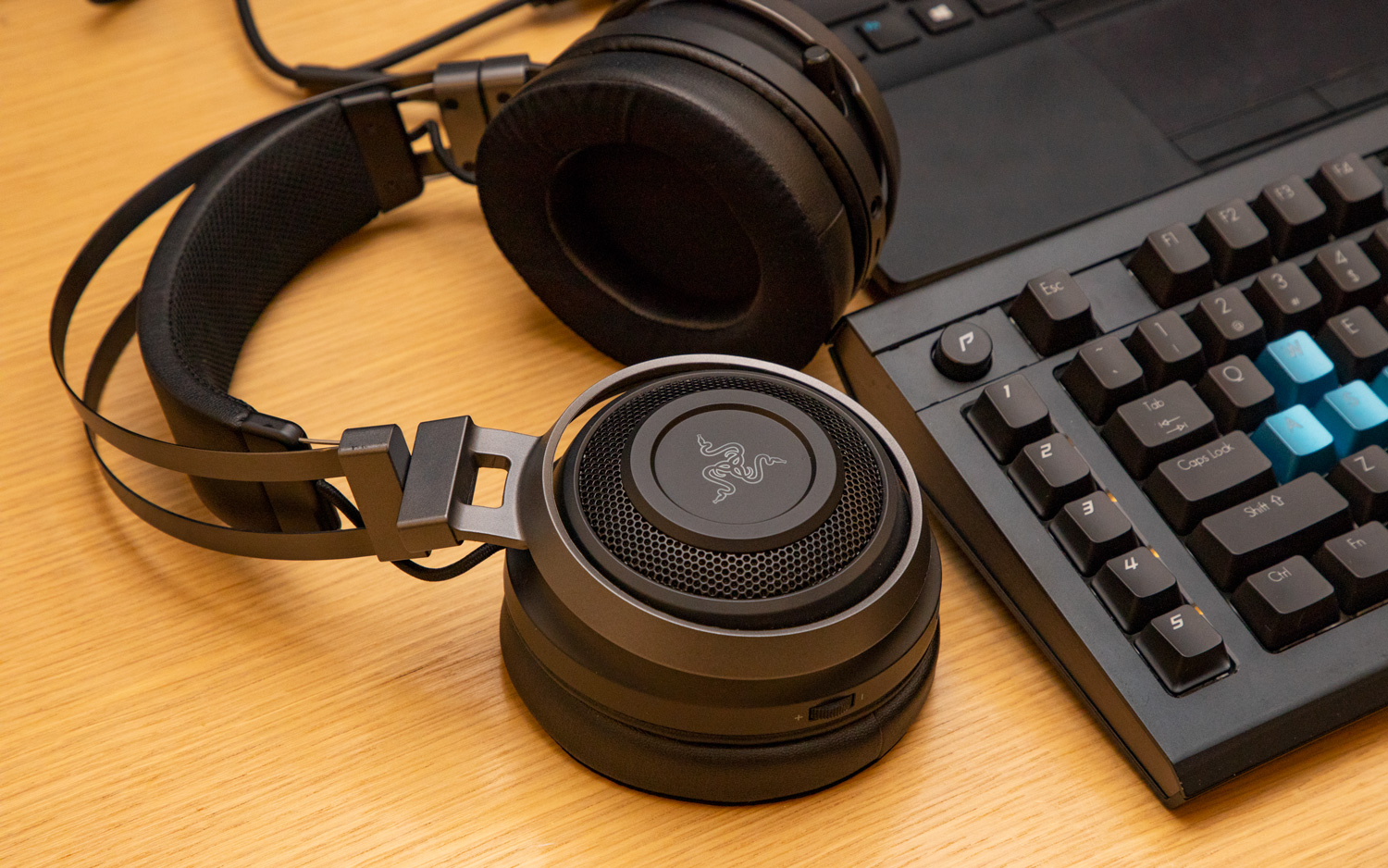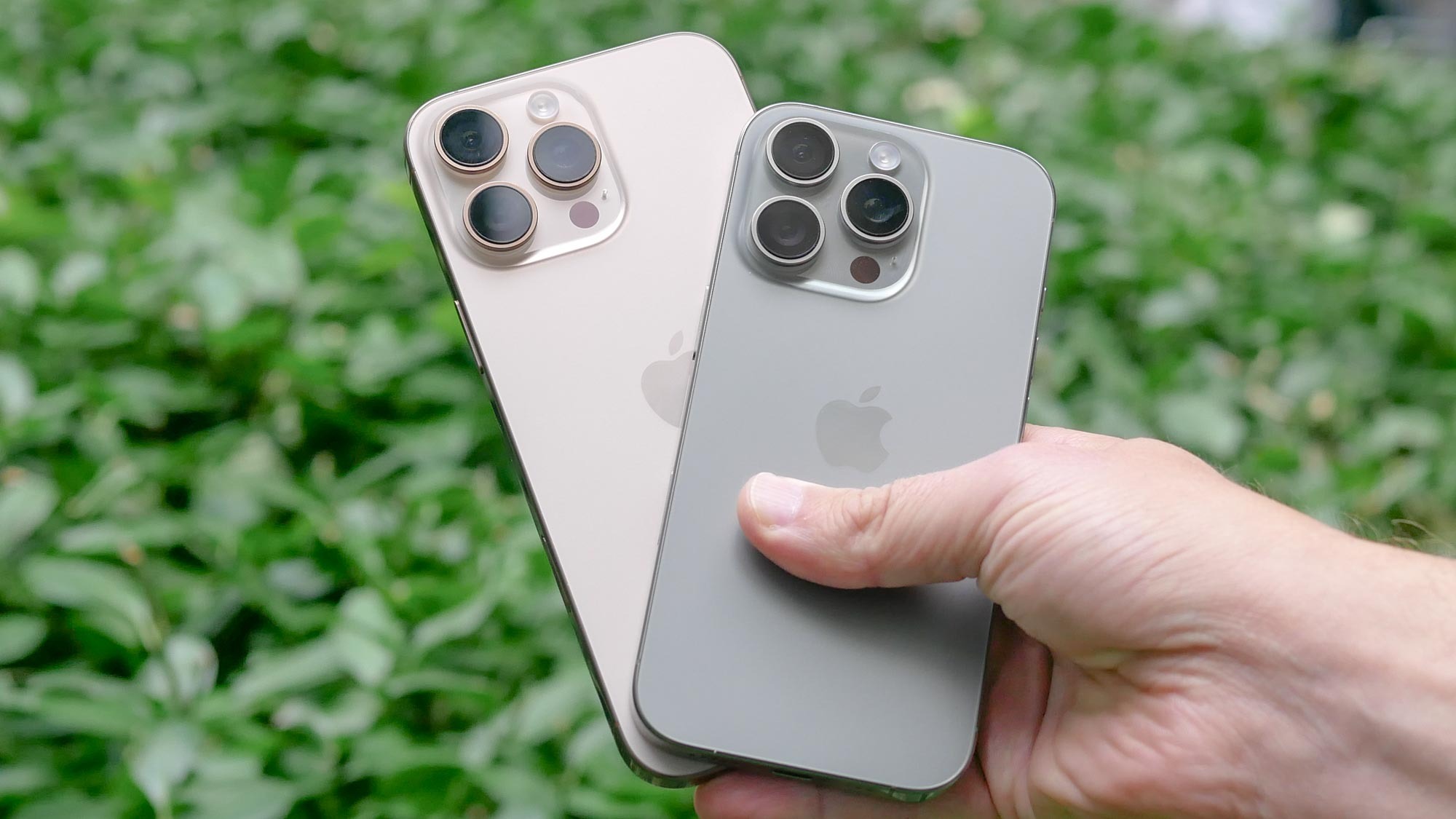Tom's Guide Verdict
The Razer Nari Ultimate offers comfortable ear cups and solid software, but it's dragged down by its dull sound, poor rumble and loose fit.
Pros
- +
Stylish design
- +
Comfortable ear cups
- +
Solid audio software
Cons
- -
Heavy, loose fit
- -
Unfriendly to phones and consoles
- -
Mediocre sound for the price
- -
Rumble is inconsistent
- -
Missing features
Why you can trust Tom's Guide
The Razer Nari Ultimate is a letdown. For $199, this wireless gaming headset offers built-in haptic technology along with a stylish design, comfortable ear cups and a solid audio software. However, the sound doesn't meet the standards of its premium price. On top of that, it's annoyingly heavy and loose fitting, troublesome in wired mode and the rumble doesn’t work effectively half of the time. While the Razer Nari Ultimate deserves props for its innovative use of rumble, it simply has one too many problems for us to fully recommend it.
Design
The Razer Nari headset looks like someone stacked two headsets together and called it "Ultimate." Seriously, though, I wouldn't be caught dead wearing this in public. For one, I look like an absolute fool wearing it, as dictated by the relentless Tom's Guide staff. Secondly, this thing slips and slides around my head even if I just turn to face another direction.
And where I could normally find room in my travel bag for my HyperX Cloud II, I couldn't for the Razer Nari Ultimate, so I reluctantly wore them around my neck. Thankfully, the ear cups can swivel 90 degrees, so they didn't choke me to carry around. The size of the headset is mostly due to its built-in haptic technology.
Aside from the size, however, the headset is pretty slick. The auto-adjusting headband is wrapped in a sleek aluminum frame that leads down to a plastic gray frame surrounding the ear cups. The ear cups themselves are stylishly carved on the outside, and Razer being Razer, there's the company's RGB-lit, Chroma-powered logo stamped onto each cup.
From top to bottom, the left cup features buttons to mute, a rocker to balance in-game and chat audio, the power button, a micro USB input for charging, a 3.5mm headphone jack and a retractable mic. The right side has a regular volume rocker and a slot to hold the 2.4G USB wireless transceiver, which is convenient for traveling.
MORE: Best Gaming Headsets
Although the Razer Nari Ultimate has a decent selection of buttons and rockers, it's incredibly annoying that there isn't one for the HyperSense. So if you want to adjust, or even turn off the HyperSense, you have to manually do it from the computer, which can be impossible if you're using the headset on your phone or consoles.
Similarly, there is a mute button on the headset, but the mute only works when connected to the computer and not anything through the audio jack.
Another complaint I have is that the volume rocker is too sensitive from 75 to 100 percent volume, and anything below that is barely audible. This makes it incredibly hard to find a good sweet spot to keep the audio leveled.
I have a similar issue with the game and chat balance rocker. For example, if I increase the volume toward the game side, it will only decrease the chat audio and not increase the game whatsoever. And, like the volume rocker, it's annoyingly sensitive.
Comfort
While the Razer Nari Ultimate’s ear cups are essentially big enough for elf ears, they're pleasantly soft. Razer claimed to have made "Hidden Indented Eyewear Channels" to make it easier to wear glasses. It's hard to tell from the outside if they exist, but I didn't feel much pressure on my glasses when I wore them.

I thought I was going to have an issue with the auto-adjusting headband, but the top-down ratio is quite snug on my head. However, as mentioned earlier, the only issue I have is how loose the cups are and how easily they can slide forward to backward on my head.
While the Razer Nari Ultimate’s ear cups are essentially big enough for elf ears, they’re pleasantly soft.
This headset is most comfortable when you're not moving around a lot, especially because you won't feel the 15.2 ounces attempting to crush your skull. Seriously, it was, literally, a weight off my head when I switched back to my personal headset.
The included audio jack provides enough room to connect to your phone or even your controller, measuring at a solid 53 inches.
Gaming Performance
The gimmick of the Nari Ultimate is that it's powered by haptic technology, otherwise known as Razer HyperSense, which is designed to rumble based on audio cues from anything you’re listening to. There was barely a moment when Razer's HyperSense rumble technology actually sounded or felt good while gaming. HyperSense caused the dialogue during cutscenes in Just Cause 4 to sound incredibly bassy and distorted. When the first mission finally started, the regular background music vibrated my eardrums to the point of exhaustion and frustration.

With HyperSense off, I skidded past a group of enemies and their bullets sounded like they were miles away, despite being right next to me. When I Rico-Rodriguezed my way out of there, I noticed that my grappling hook and the wind brushing against me while I wingsuited were terribly muffled.
While making quick work of a Barroth in Monster Hunter World, HyperSense made certain effects sound muted, such as the Barroth's large stomps or even a giant slam from my teammate's hammer. After 30 minutes, I was sick of feeling the rumble in each inconsequential quick shot I performed with my bow.
There was barely a moment when the HyperSense rumble technology actually sounded or felt good while gaming.
Although the sound was more tolerable with the rumble off, it just wasn't good. While tracking an Azure Rathalos, the beast ambushed me and unleashed a terrifying roar. Except it didn't sound threatening. Upon mounting the monster, I fired my Zero Sum Discharge attack into its tail, but the rapid explosions I inflicted were indistinct. If I were the monster, I would have shrugged it off as a fly buzzing around.
MORE: The Best Headsets for Immersive Gaming
During the annual Yeti Hunt in Overwatch, firing my blaster at Winston with HyperSense on actually threw me off my game, as if my ears took a hit of recoil while I was shooting. Despite that, when Winston chased me into a corner, I felt the weight of him slamming into the ground as the vibrations took hold.
In Mei's Snowball Offensive, with HyperSense disabled, I could hear enemies attempting to sneak up on me from behind due to the THX surround sound. Although the 360-degree sound enhanced the audio, Mei's dialogue and the background music still lacked proper depth.
When Winston chased me into a corner in Overwatch, I felt the weight of him slamming into the ground as the vibrations took hold.
While gaming, the headset would occasionally disconnect and reconnect on my PC. That caused it to make a beep sound and reset my settings for a moment, then bring it back upon reconnection.
And I even ran into a bug with the THX Spatial Audio where if I turned on the headset with it enabled, it would create an alarming buzzing sound. I had to turn on the headset with it disabled in order to fix it.
Music Performance
Ironically, the HyperSense rumble works much better with music than gaming. It synced up beautifully to the bass drum on ONE OK ROCK's 'Be the Light," giving it an extra oomph to the song. However, when I turned HyperSense off, I realized that the rumble was distracting me from what was wrong with the sound. The blend between tracks, especially the guitar and vocals, sounded muddy and unrefined, which is quite disappointing for a premium priced headset.

On top of that, HyperSense doesn’t sync up well to every song. While listening to Gorillaz "Feel Good Inc," the rumble activated at the most awkward moments during the chorus, and with more intensity than necessary. When I turned HyperSense off, the highs and lows of the chorus just weren't as punchy as I expected. I found myself turning up the volume just to distinguish some of the beats. Despite that, the THX surround sound captured the acoustic guitar emanating just behind me.
The HyperSense was a hit and miss while I listened to Jonathan Young's cover of "Unravel." I could hear the drums and feel the rumble that synced up to it at the same time, whereas the other two songs I'd get one without the other. On the other hand, HyperSense inexplicability activated during the intro of the song, for what I guess is due to a blend of the guitar and electronic beats. Between its epic guitar riffs and intense vocals, Unravel is the perfect pump-up song, but I felt none of that when I turned HyperSense off, as each track melded with barely any highlighted lows or highs.
Throughout each song, I didn't notice much of a change while messing with the Bass Boost settings in the Razer Synapse software, and the Sound Normalization further pushed the highs and lows to the middle. And when I raised the volume, there was a distinct grainy distortion that can be heard in the background of each song.
MORE: Best Headphones and Earbuds for Enjoying Music
When I handed the Razer Nari Ultimate (rumble on) off to some co-workers, responses included "Why am I feeling my music?" and "This is wholly unnecessary."
Features
The Nari Ultimate is powered by Razer's Synapse software, where you can customize your audio. Here you can enable THX Spatial Audio (surround sound) for specific apps, as well as enhance the audio with settings like Bass Boost, Sound Normalization, Voice Clarity and Haptic Sensitivity. The app also gives you access to a full equalizer along with presets for Game, Movie and Music.

There are microphone settings that let you adjust volume, sensitivity and mic monitoring. You can also enable enhancements like Volume Normalization, Ambient Noise Reduction and Vocal Clarity. Even with that, multiple friends on Discord agreed that I sounded a lot better without the enhancements. And they were right. When I recorded a clip of myself with enhancements, I sounded like a robot. Although, recording myself without them didn't sound too spectacular, either.
Naturally, there is a tab to customize the Chroma lighting as well as an option for power saving. You can also customize sound profiles for specific games and save them in the app.
According to Razer's website, the Nari Ultimate headset can last up to 8 hours on a charge with Razer Chroma lighting and HyperSense enabled, and up to 20 hours with those features disabled. However, the Razer Nari Ultimate doesn't have to be powered to hook up to anything with a 3.5mm audio jack.
Bottom Line
Between its quality of life issues and dull sound, the Razer Nari Ultimate is tough to recommend to anyone, especially at $199. What makes it so unique, its HyperSense, is what throws the sound quality down the hole.
For $149, you could get the SteelSeries Arctis 7, which is currently our top overall gaming headset due to its great sound, comfortable fit and seamless wireless capabilities. Or if you're keen on Razer, you can get the Razer Thresher Ultimate for $199, which we also praised for its comfort, high-quality audio and easy-to-use surround sound.
Overall, we’d recommend avoiding the Razer Nari Ultimate for now. If you’re dying for some rumble in the jungle, then you should probably wait until Razer perfects the art of haptic technology on future iterations.
Credit: Tom's Guide


